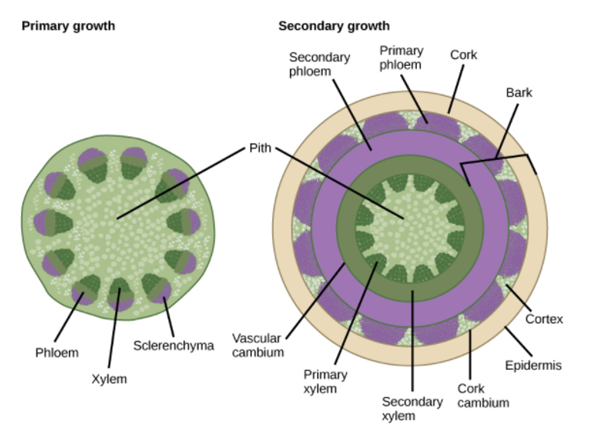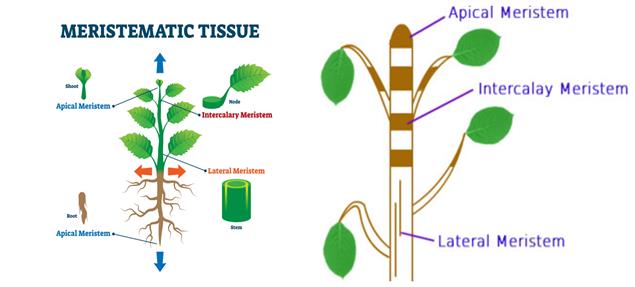
PUMPA - SMART LEARNING
எங்கள் ஆசிரியர்களுடன் 1-ஆன்-1 ஆலோசனை நேரத்தைப் பெறுங்கள். டாப்பர் ஆவதற்கு நாங்கள் பயிற்சி அளிப்போம்
Book Free DemoHave you noticed the growth of plants? How do they grow into very large trees? How could a small plant increases its length and width so much? This growing characteristic is specific to plants because of a special type of tissue called meristematic tissue. This tissue always keeps dividing into other tissues and is responsible for the plants growth in its length and width of the plants.
A. Based on the origin and development:
- Promeristem
- Primary meristem
- Secondary meristem
1. Promeristem:
It is also called as primordial meristem or embryonic meristem or mother meristem. These are the earliest and youngest meristem cells of a growing organ that originate from the seed embryo. These cells are undifferentiated. However, they ultimately go through cell division to produce primary meristem cells. Promeristem cells form the first meristematic tissues in the root tips and shoot tips of the plant. Usually, they occupy a smaller area.
2. Primary meristem:
Primary meristem are produced from promeristem, which further divides to form different permanent tissues. Usually, they are found below the promeristem at shoot and root apex. Primary meristems are the birth place of primary permanent tissues increasing the plant's length.
Example:
Apical meristem and intercalary meristem.
3. Secondary meristem:
Secondary meristems are not formed during the early stages of differentiation. Later, it develops from primary permanent tissue, which has division capacity, by the process of de-differentiation. Secondary meristem form permanent secondary tissue for secondary growth (increases only in width).
Example:
Cork-cambium, cambium of roots and interfascicular cambium of stem.

Primary and secondary growth of the vascular bundles
B. Based on their position:
- Apical meristem
- Intercalary meristem
- Lateral meristem

Types of meristematic tissue
1. Apical meristem:
Location: It is located at the growing tips of the stemand rootsof vascular plants. They include both pro-meristem and
Primary meristem. It produces three types of primary meristems; they form three different kinds of primary permanent tissues: dermal, vascular, and ground tissues.
Function: It helps to increase the length of the stem and the roots. It acts as the promeristm having actively dividing cells giving rise to other new meristems.
2. Intercalary meristem:
It lies between the region of permanent tissues and is part of the primary meristem, which is detached due to the formation of intermittent permanent tissues.
Location: It is present at the base of leaf, e.g. Pinus and inter-nodes base, e.g. grasses and bamboo.
Function: Their primary function is to provide elongation (longitudinal growth) and growth of part of the plant where they are present.
Important!
Note: Internode is nothing but between the places at which the leaves attach, i.e., at leaf bases.

Stem showing internode, nodes and leaf petioles
3. Lateral meristem/Cambium:
These are arranged parallel to sides of origin and usually divide radially to give permanent secondary tissues.
Location: It is located at the lateral sides of stems and roots.
Function: It increases the thickness (girth) of stem and root (circumference of the stem and root).
Example:
Vascular cambium and cork cambium
Reference:
https://www.flickr.com/photos/144872528@N06/29379783425/in/photostream/
https://openstax.org/books/biology/pages/30-2-stems